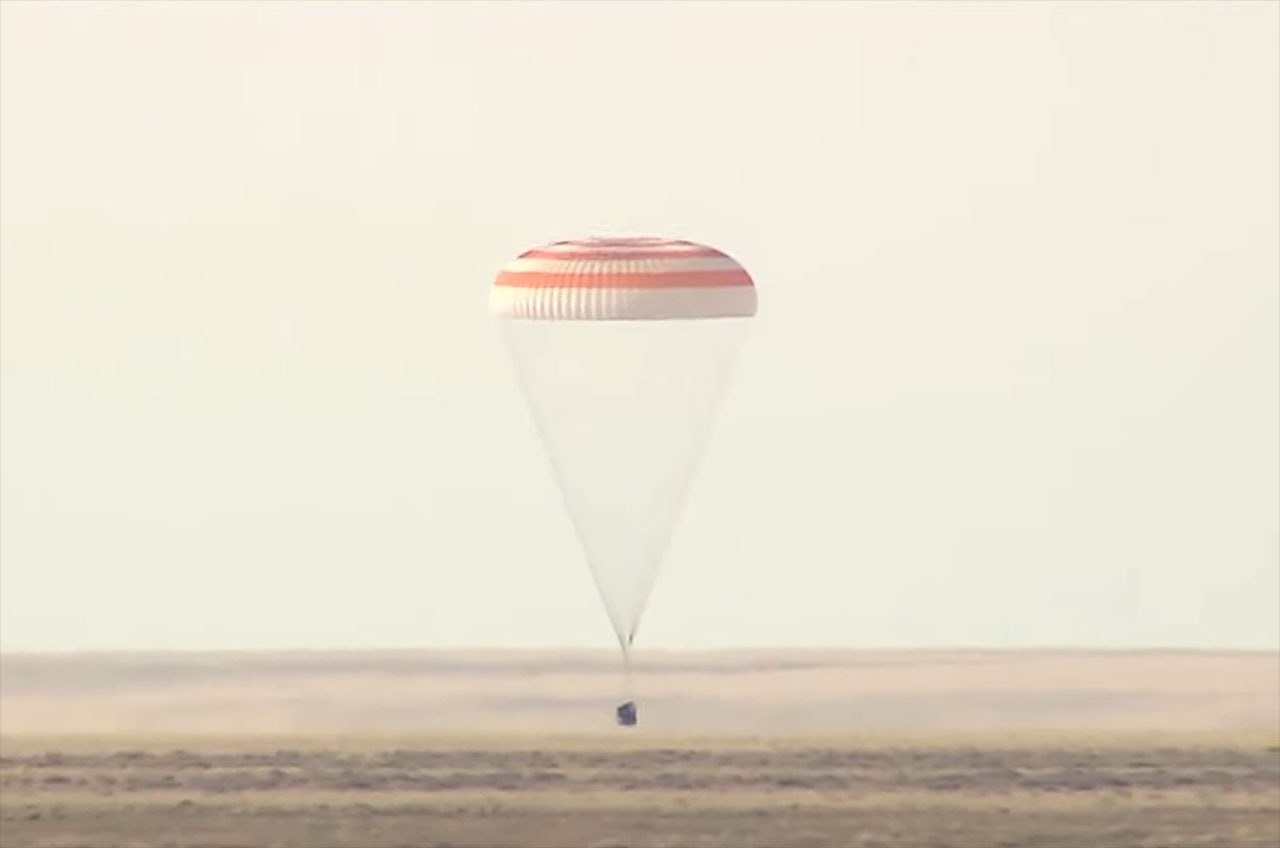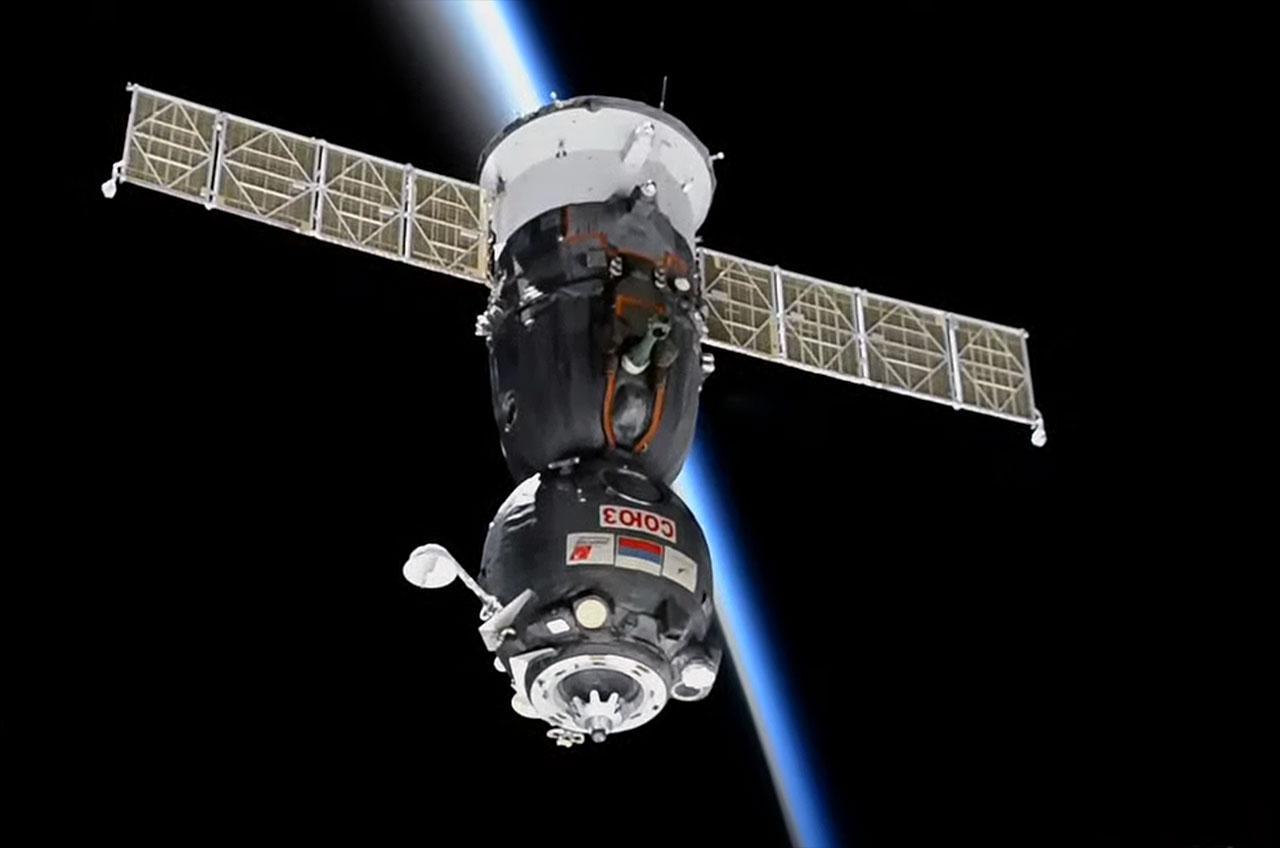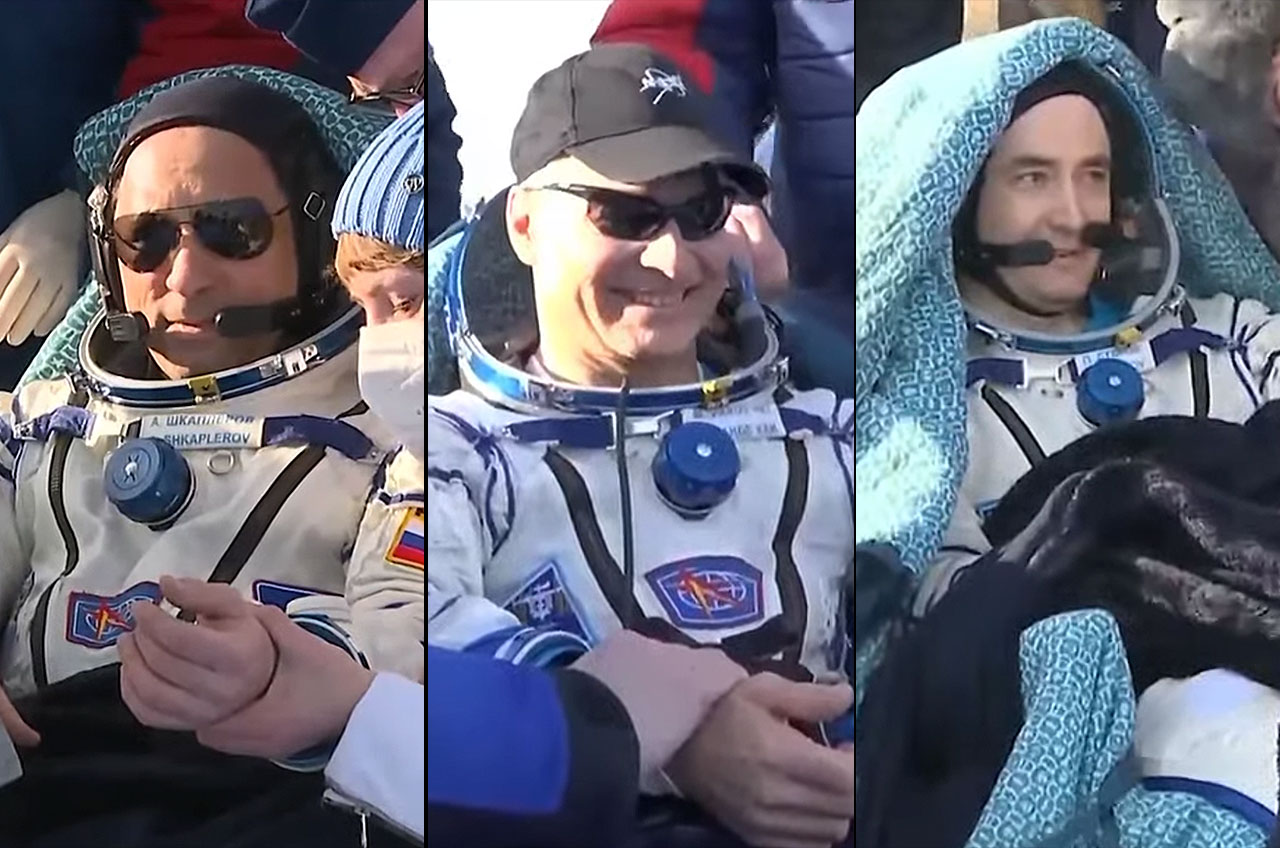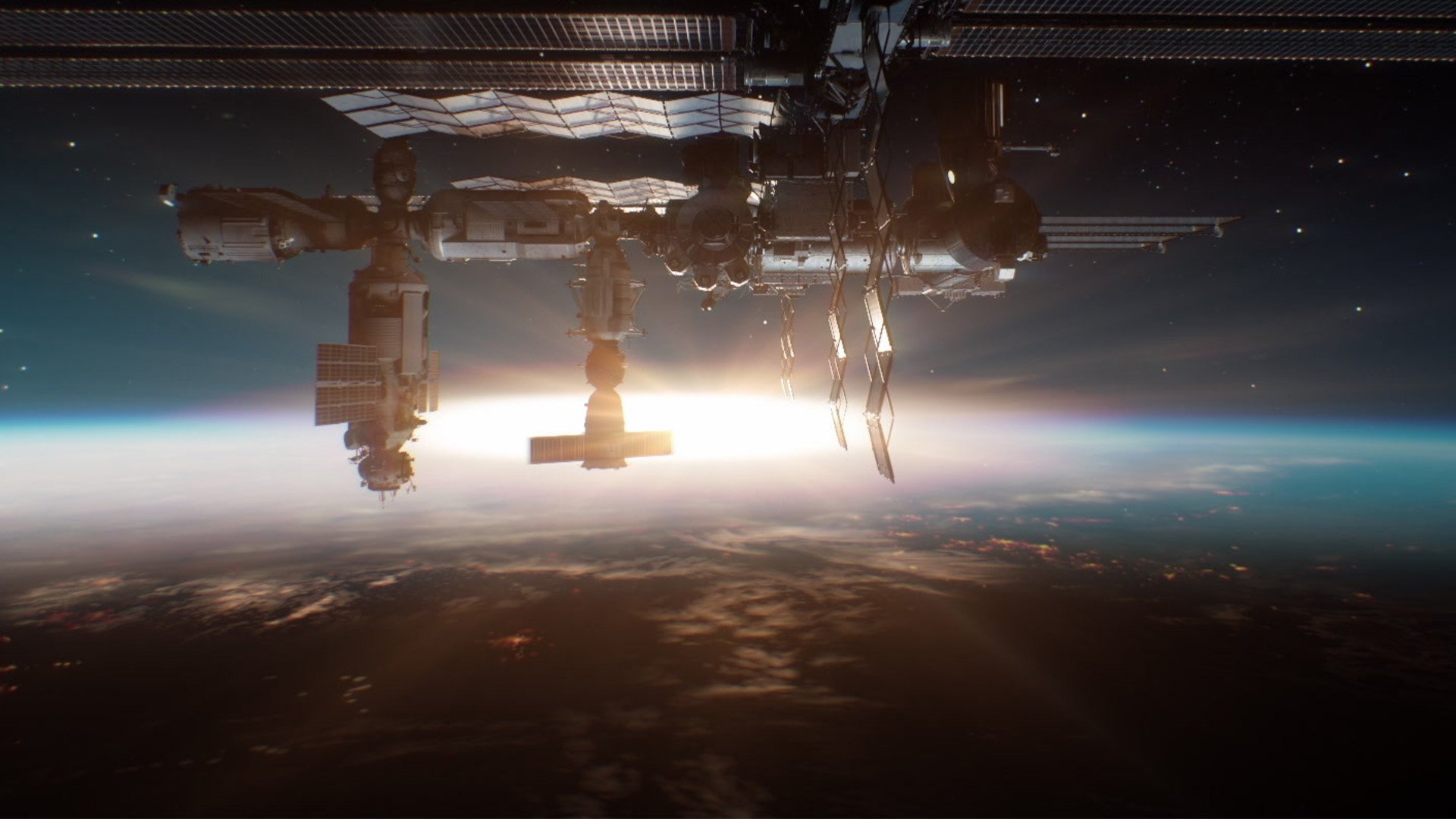Record-breaking US astronaut and Russian crewmates return to Earth from space station
NASA astronaut Mark Vande Hei set new record for longest single mission by an American.
A record-setting American astronaut and his two Russian crewmates have returned together from the International Space Station, showing that cooperation in space can continue even as tensions on the ground run high.
Mark Vande Hei of NASA, who at 355 days has now spent more time on a single space mission than any other U.S. astronaut in history, landed alongside his two Expedition 66 colleagues, cosmonauts Pyotr Dubrov and Anton Shkaplerov of Roscosmos, Russia's space corporation. The three touched down on Wednesday (March 30) at 7:28 a.m. EDT (1128 GMT or 5:28 p.m. local) on Russia's Soyuz MS-19 spacecraft, descending to the steppe of Kazakhstan, southeast of the town of Dzhezkazgan. Their landing came just of four hours after departing the International Space Station.
"I've had an indoor job, 24/7, for almost a year, so I am looking forward to being outside, no matter what kind of weather," Vande Hei said prior to leaving the space station. After landing, he and his two crewmates were met by Roscosmos and NASA recovery teams, who helped them out of the Soyuz and into chairs, where they briefly sat outside, beginning to adjust to gravity and receiving a preliminary medical check.
Video: Astronaut Mark Vande Hei on his near-year in space
Related: Mission updates from the International Space Station
For Dubrov, it was also the end of a 355-day mission, having launched with Vande Hei in April 2021. Shkaplerov wrapped a 175-day stay on the station, during which he served as commander of the Expedition 66 crew.
"We worked very hard, like one crew, and we didn't have problems," Shkaplerov said during a brief change of command ceremony on Tuesday.
Despite their countries' strained relations over Russia's invasion of Ukraine, Shkaplerov called his American and European crewmates his "space brothers and space sister."
Breaking space news, the latest updates on rocket launches, skywatching events and more!

"People have problems on Earth. On orbit, we are like — no, we are not like, we are one crew — and I think the ISS [International Space Station] is a symbol of the friendship and cooperation and a symbol of future exploration of space," he said.
Shkaplerov, Dubrov and Vande Hei left the space station to begin their trip home at 3:21 a.m. EDT (0721 GMT) on Wednesday, undocking Soyuz MS-19 from the Rassvet mini research module. Their departure signaled the start of Expedition 67 on board the station with commander Tom Marshburn and flight engineers Raja Chari and Kayla Barron, all of NASA, Matthias Maurer of the European Space Agency (ESA) and Roscosmos cosmonauts Oleg Artemyev, Denis Matveev and Sergey Korsakov continuing to staff the orbiting laboratory.
Related: Russia's invasion of Ukraine in satellite photos
During Dubrov and Vande Hei's extended stay on orbit, they were members of three expedition crews (64, 65 and 66). They shared the space station with 22 crewmates, including short-stay visits by two Japanese tourists and a Russian film crew, the latter there to shoot scenes for the still-to-released movie "The Challenge" (Shkaplerov arrived at the space station with the actress and director in October.)
Dubrov also conducted four spacewalks, including one with Shkaplerov, to prepare for the arrival and later outfit two new Russian modules, the "Nauka" multi-purpose laboratory and "Prichal" node.

Vande Hei helped conduct hundreds of science investigations and technology demonstrations, including setting a record by harvesting 26 chile peppers to feed the most astronauts from a crop grown in space.
Vande Hei's stay surpassed the previous record of 340 days for the longest consecutive time in space by an American as set by NASA astronaut Scott Kelly in March 2016. Completing his second mission, Vande Hei now has a total of 523 days in space.
Dubrov's 355-day mission ranks him fourth (tied with Vande Hei) on the worldwide list for the longest spaceflight. Soviet-era cosmonauts Musa Manarov, Vladimir Titov and Valery Polyakov each logged longer times on orbit, with Polyakov flying the longest mission in history at 437 days, 17 hours and 58 minutes.
Shkaplerov ended his fourth mission with 708 cumulative days spent in space. He now ranks seventh on the worldwide list for most time spent off Earth.
Shkaplerov and the Soyuz MS-19 spacecraft traveled a total of 74.7 million miles (120 million km) while completing 2,816 orbits of Earth. Vande Hei and Dubrov completed 5,680 orbits of Earth while traveling more than 150 million miles (240 million km).
Now on the ground, Shkaplerov and Dubrov will return to Star City, outside of Moscow, while Vande Hei is flown back to the Johnson Space Center in Houston, Texas.
Follow collectSPACE.com on Facebook and on Twitter at @collectSPACE. Copyright 2022 collectSPACE.com. All rights reserved.
Join our Space Forums to keep talking space on the latest missions, night sky and more! And if you have a news tip, correction or comment, let us know at: community@space.com.

Robert Pearlman is a space historian, journalist and the founder and editor of collectSPACE.com, a daily news publication and community devoted to space history with a particular focus on how and where space exploration intersects with pop culture. Pearlman is also a contributing writer for Space.com and co-author of "Space Stations: The Art, Science, and Reality of Working in Space” published by Smithsonian Books in 2018.
In 2009, he was inducted into the U.S. Space Camp Hall of Fame in Huntsville, Alabama. In 2021, he was honored by the American Astronautical Society with the Ordway Award for Sustained Excellence in Spaceflight History. In 2023, the National Space Club Florida Committee recognized Pearlman with the Kolcum News and Communications Award for excellence in telling the space story along the Space Coast and throughout the world.


